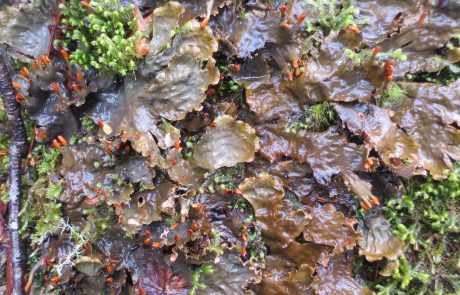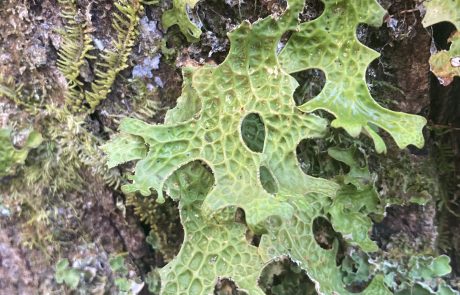Lichens
Enter the exciting world of lichens, where algae, fungus, and sometimes yeast come together to form incredible, colorful creatures! These wild organisms are not plants or animals – they’re somewhere in between! Once you’re introduced to the tiny, intricate world of lichens, you’ll start noticing them everywhere: on rocks, trees, logs, old tires, roofs, fence posts.
Lichens can be classified into three morphological types: crustose (crust-like, can’t be separated from the substrate it grows on), fruticose (shrubby, hairy, stick-like or hanging) and foliose (leaf-like, almost looks like corn flakes). In the Great Smoky Mountains we observe and categorize the lichens we live with to note any changes in the types and diversity we find over time. But don’t worry! Lichens don’t stick to the park boundaries, and we can observe them in our schoolyards, parks, or neighborhoods as well!
Why It Matters
Lichens are bioindicators. A bioindicator is a species that reacts strongly to a pollutant or a change in their environment, often before other organisms are affected, and can alert us to threats or changes in environmental health. Biomonitoring is when you check the health of the indicator species over time to observe how populations are affected by a changing environment, including their resilience and repopulation if the threats are mitigated. We monitor our lichens to directly measure the results of an excess of sulfur dioxide and other pollutants in the air.





